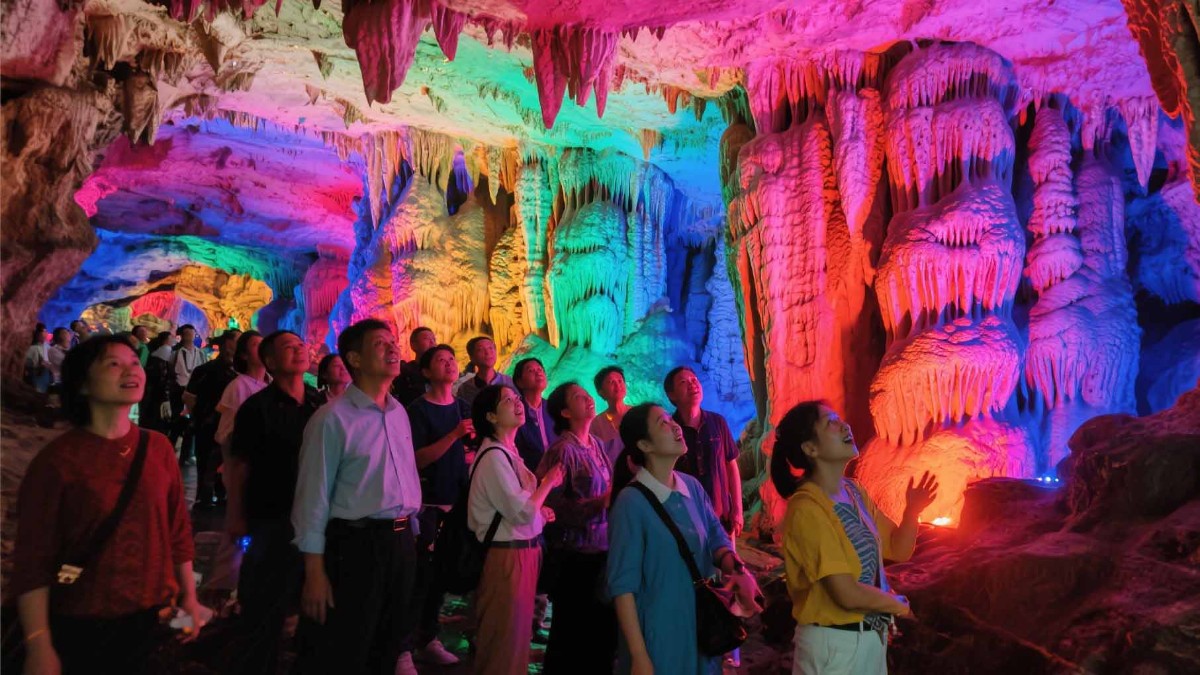AI Tour Guizhou
Case Background
Personalized Itinerary Planning: Generate itinerary plans that dynamically balance time, transportation, and physical exertion according to user needs (such as parent-child travel and elderly travel).
Real-Time Service Optimization: Integrate functions such as multilingual guided tours, real-time problem-solving, and booking services to reduce the planning burden on tourists.
Data-Driven Decision-Making: Assist in policy formulation and resource allocation through user behavior analysis to promote the sustainable development of the tourism industry.

Application and Implementation Process of AI Technology
Requirement Analysis and Logical Deduction - Chain-of-Thought (CoT) Reasoning: Simulate the logical chain of human itinerary planning, from "user need analysis" to "attraction relevance judgment" and then to "dynamic balance of time and physical strength". For example, for the demand of "5-day parent-child tour in Guizhou", AI will prioritize age-appropriate attractions such as Huangguoshu Waterfall and Xijiang Qianhu Miao Village, and automatically calculate transportation time to generate a work-rest balanced itinerary. - Multimodal Data Integration: Combine the travel notes, guides, and POI (points of interest) data accumulated on the Mahone Bay platform with real-time user feedback to optimize algorithm weights, forming a closed loop of "planning-feedback-iteration".
Function Implementation and Interaction Experience
One-Click Itinerary Generation: When users input needs (such as "4-day Guizhou tour for an 8-year-old child to learn geography"), AI generates a complete plan including attractions, dining, transportation, and health tips within 10 seconds, and supports voice command modification. - Multilingual Intelligent Tour Guide: Provide real-time explanations through speech recognition and AR technology. For example, the AI tour guide in Guiyang can dynamically display historical scenes to enhance interest. - Closed Loop of Booking and Performance: The generated itinerary can directly jump to the ticket and hotel booking pages, realizing one-stop services of "planning-booking-experience".

Data-Driven Management Optimization - Tourist Portrait and Traffic Prediction:
Predict the passenger flow of popular attractions by analyzing itinerary data to assist management departments in taking advance dredging measures. For example, Guizhou's cultural and tourism department uses AI data to adjust scenic spot resource allocation and improve tourist comfort.
Sustainable Tourism Support:
AI recommends off-peak routes and low-carbon transportation methods to reduce the environmental pressure on scenic spots and help ecological protection.

Implementation Effects - Improved User Experience:
Users no longer need to manually filter information, planning efficiency is increased by 90%, and itinerary satisfaction reaches 95%. - Enhanced Management Efficiency: The passenger flow prediction accuracy of popular scenic spots in Guizhou is increased by 30%, and resource allocation efficiency is optimized. - Industry Innovation Demonstration: The project has become the first provincial AI tourism benchmark in China, promoting the construction of Guizhou's cultural and tourism large model, and has been popularized to scenarios such as "AI Tour Qianxinan" and "AI Tour Xijiang".
Challenges and Future Directions - Technical Adaptation Costs:
Small and medium-sized scenic spots find it difficult to deploy complex AI systems due to funding constraints and need to rely on policy support and technological inclusion. - Data Security and Privacy: It is necessary to ensure the secure storage and compliant use of user itinerary data. - Deepening Human-Machine Collaboration: AI cannot completely replace human services (such as emotional communication and emergency handling). In the future, a symbiotic model of "AI planning + human polishing" will be formed.
Conclusion
"AI Tour Guizhou" deeply integrates large model technology with the needs of the tourism industry, which not only solves the pain points of traditional tourism but also creates a new model of "intelligent planning-immersive experience-sustainable management". This case demonstrates the practical application potential of AI in complex scenarios and provides a replicable digital transformation path for other destinations.
In 2025, Mahone Bay and DeepSeek jointly launched the "AI Tour Guizhou" intelligent agent, which became China's first provincial-level smart tourism platform. It aims to optimize the tourist experience and improve tourism management efficiency through AI technology.
Task Objectives













